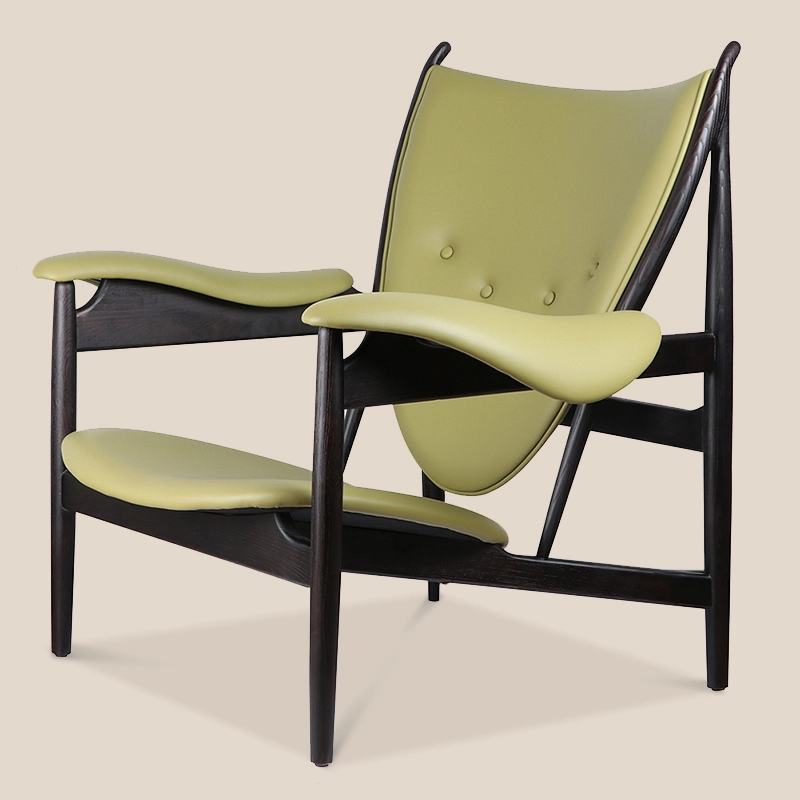Chieftain Lounge Chair #M3126 Tailored Solid Wood Living Room Armchairs Vendor MISIRUI
MISIRUI Chieftain Lounge Chair #M3126 Designed by Finn Juhl in 1949, the Chieftain Chair is now an icon of Danish furniture art. Comprised of a sculptural teak and walnut frame with luxe leather upholstery, the chair was inspired by primitive weaponry, as is evidenced in the chair's distinctive shapes.
Designed for the Cabinetmaker's Guild in Copenhagen in 1949, King Frederick IX sat in the chair, giving the chair the nickname, "King's Chair" by a journalist. Juhl insisted that the chair be named "Chieftain" instead, as it was less pretentious. The chair is known for presenting a pivot in the direction of Danish furniture design, and remains one of the most celebrated furnishings to come out of the Danish Modern Movement. The chair is both elaborate and streamlined, and exudes grandeur and sophistication.
Product Details
Product details display
DESIGN CONCEPT
Family: CHIEFTAIN CHAIR
Designer:Finn Juhl
Country:Denmark
Launched: 1949
Designed by Finn Juhl in 1949, the Chieftain Chair is now an icon of Danish furniture art. Comprised of a sculptural teak and walnut frame with luxe leather upholstery, the chair was inspired by primitive weaponry, as is evidenced in the chair's distinctive shapes. Designed for the Cabinetmaker’s Guild in Copenhagen in 1949, King Frederick IX sat in the chair, giving the chair the nickname, "King's Chair" by a journalist. Juhl insisted that the chair be named "Chieftain" instead, as it was less pretentious. The chair is known for presenting a pivot in the direction of Danish furniture design, and remains one of the most celebrated furnishings to come out of the Danish Modern Movement. The chair is both elaborate and streamlined, and exudes grandeur and sophistication.
Application Scenario
OUR ADVANTAGES
Finn Juhl's "Chieftain" armchair, originally crafted for the 1949 Cabinetmaker's Guild Exhibition in Copenhagen, stands as a revered masterpiece of Danish design from the twentieth century. This particular example, meticulously crafted by the original artisan Niels Vodder, captures the essence of the chair's iconic form, including the original distinctive 'horn' shape adorning each stile at the top of the backrest, which underwent subtle adjustments over the years. The chair retains a sculpted spacer and rubber bumper positioned at the back, serving as a structural component that provides support to the backrest. The rubber bushing, which was phased out in 1955, remains intact in this remarkable piece. Exhibiting exceptional preservation and embodying the design elements of its early productions, the present "Chieftain" chair stands as a remarkable testament to its iconic status.
fit the curve of the human back, super wide sitting deep, easy to deal with a variety of lying positions. Add high-density sponge, feel friendly, more suitable for long time to rest, relieve fatigue.
Other Color Choices
Related Products
Questions About Our Products? We're Here for You.


























